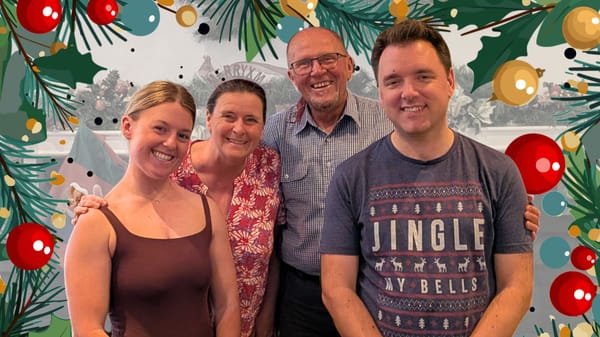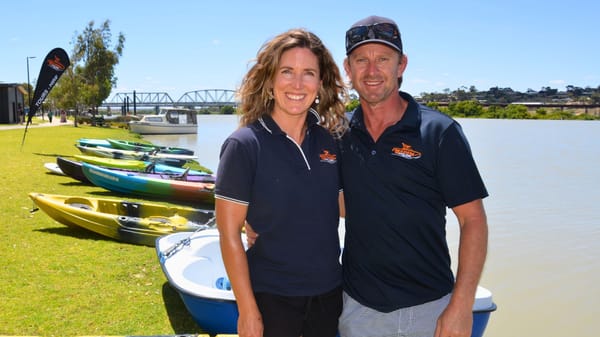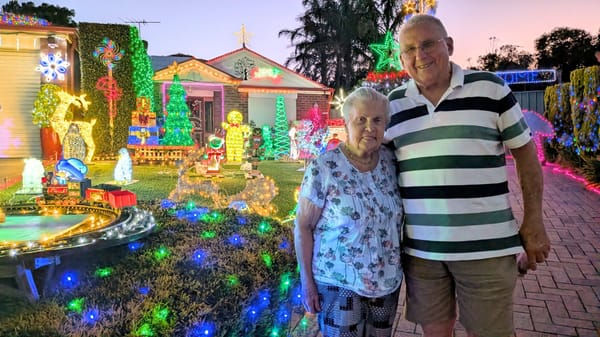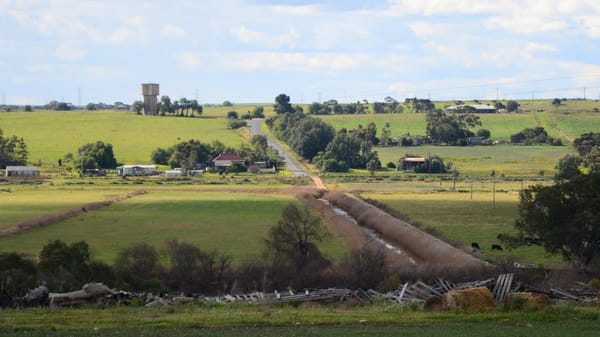‘I had to grow up fast’: What it’s like to survive being homeless in Murray Bridge
A pop-up exhibition by AC Care has helped local share their stories in their own words during Homelessness Week.

This post about a community cause is free to read. Please help Murray Bridge News tell more local stories by subscribing.

“People probably describe me as ‘hard’.”
“I had to grow up really fast.”
In a free-flowing voice, a young woman describes the trials she and her family faced after they moved to Murray Bridge when she was five.
“We were told that we would have accommodation, but ended up sleeping in our car, under the bridge, then I was taken into foster care,” she said.
Despite being designed to protect children, her experiences in the foster care system were no better than her life beforehand.
“I remember parenting from the age of six, carrying the worries of adult life and displacement from family,” she said.
The anonymous support worker and carer, now 25, was one of many locals who shared their experiences of homelessness, in words and photos, at a pop-up exhibition in Murray Bridge on Tuesday.
The walls of the Vicki Nottage Sculpture Court were covered with images taken by locals who have couch-surfed, crashed in tents and caravans or slept rough.
In a few instances, QR codes connected visitors to audio files of interviews in which they could tell their own stories in their own words.

Shane Maddocks – chief executive of AC Care, the support agency which organised the exhibition for Homelessness Week – credited the locals who participated for their bravery.
“When you walk around and read their stories (you realise that) the tragedy of many people’s lives (is) often due to circumstances they couldn’t have predicted, that they had no control over, and often resulted from a situation where society or the community let them down,” he said.
“Many of us probably think that we would never end up in this situation, (but) one situation, one tragic circumstance in your life, and the things that you depended on ... those things can go in an instant.
“We need to listen to these stories.”

Homelessness was the fight to stay dry and warm while watching others go into their homes, struggling to quieten the pain of hunger when the fridge was empty.
Homelessness was having to leave a beloved pet behind and struggling to understand why.
Homelessness was emptiness and insecurity.
Homelessness was an escape from a violent relationship with no job and a one-month-old son.
“He only ever called me ‘slut’,” a young woman recalled of an abusive teenaged relationship; she and her daughter fled to a shelter while her partner was at work one day and had never looked back.
A man spent 15 years couch-surfing after growing up in a household full of drug users; “now I’m not on the drugs and alcohol, I’ve got myself a house, I’m happy”.
A Family Court decision left a man without a home, and he turned to drugs and alcohol; now, at age 47, having moved to Murray Bridge, he was preparing to start a new job.

Preventing homelessness would take a whole-of-community approach, Mr Maddocks said, one in which people wrapped around each other and shared messages of hope.
It would also take action from governments, including an increase to the rate of unemployment benefits so as to lift recipients out of abject poverty.
Though the exhibition was only on display for one day, AC Care staff hope to find a new venue for it or to display the collection of photos and stories online.
- Contact the Homelessness Gateway on 1800 003 308; or contact AC Care by visiting 29 Bridge Street, Murray Bridge, calling 1300 AC CARE, emailing care@accare.org.au or going to www.accare.org.au.
- Share your story with Murray Bridge News: Email peri@murraybridge.news, call Peri on 0419 827 124 or visit us at 5/30 Seventh Street, Murray Bridge.
You can help keep local stories like this one free for everyone to read. Subscribe to Murray Bridge News today and support your independent, locally owned news service, plus get access to exclusive stories you won’t find anywhere else, from just $5 a month.





